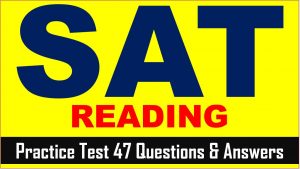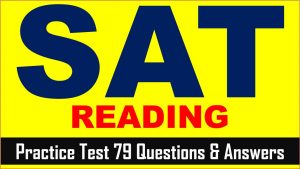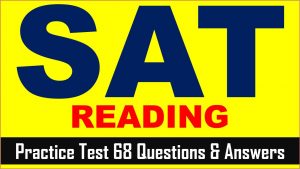SAT (Scholastic Assessment Test) is a standard test, used for taking admission to undergraduate programs of universities or colleges of the United States. SAT is developed and published by the College Board, an organization in the United States, administered by the Educational Testing Service. In this article of AKVTutorials, you will get Kaplan SAT Course Book Review | Practice Test 16 AMBiPi.
Kaplan SAT Course Book Review
Over the decade, Kaplan SAT Prep courses have been the king of SAT test prep and this course is high demanded among the students who are SAT aspirants.
According to the report, thousands of high scholars scores maximum in SAT test by reading Kaplan SAT course.
Now, is Kaplan SAT courses best for SAT preparation after all of these track record and success rate of SAT candidates?
Yes or No.
Let’s review Kaplan SAT Test Prep Course in this article. And, after reading this article, you will find that Kaplan SAT prep course is best for SAT exam or NOT.
Kaplan SAT Prep Course Options and Pricing
From the official website of Kaplan SAT prep company, you find that Kaplan provides three types of SAT course names as SAT One Demand, SAT Live Online and SAT Unlimited Prep, given as below.
For Updated Kaplan SAT Prep Course, Check its Official Website.
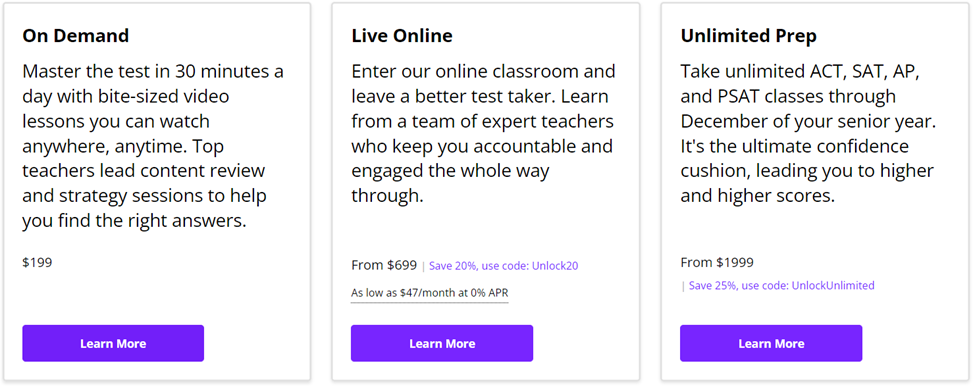
Let’s understand one by one about these courses.
Kaplan SAT On Demand Course Package
(Price: $199)
In this course, SAT On Demand Prep Course includes three main points are considered:
- bite sized lessons
- maximum points
- a higher score period.
SAT On Demand Prep course does NOT provide you a hard copy of SAT course.
Kaplan SAT Live Online Course Package
(Price: $699)
In this course, you will be taught by SAT experts who has more than 10 years of experience of SAT syllabus teaching. They guide you what to study and how to study and provides a right strategy to beat SAT test. Hence, SAT experts help students get comfortable with exam so that SAT aspirants can reach their highest potential.
Session 1:
- SAT Course Orientation,
- SAT Writing & Languages Foundations like sentences structure and subject verb agreements.
- SAT Math Solving Equations Method
Session 2:
- SAT Reading Strategy
- SAT Linear equations and System of equations
Session 3:
- SAT Grammar with Pronoun and Modifier Agreements,
- SAT Math Inequalities, Ratio, Unit Conversion and Percentage.
Session 4:
- SAT Reading with the method of answering the reading questions
- SAT Math Percent Change, Statistics, Frequency and Graphs
Session 5:
- SAT Writing and Languages with Conciseness, Organization, Word Choices.
- SAT Math Statistics and Probability
Session 6:
- SAT Reading Questions Types
- SAT Math Function Concepts
Session 7:
- SAT Reading Paired Passages Questions Types
- SAT Math Exponents, Radicals, Polynomials and Quadratic Expression and Equations
Session 8:
- SAT Reading Literature Passages Questions Types
- SAT Math Geometry and Graphs of Quadratic Expressions
Session 9:
- SAT Writing and Language Development
- SAT Math Three-Dimensional, Trigonometry and Complex Numbers
And, among these sessions, there are 8 practice tests are scheduled.
Kaplan Unlimited Prep Course Package
(Price: $1999)
This course is for preparation of SAT, ACT, AP and PSAT.
Since College Board schedules SAT test dates seven times in a year and you are not sure about when you should you give SAT test and for which when you should the SAT preparations, then Kaplan provides this Unlimited Prep Course.
In this program, you can schedule classes anytime and take as many as you want through December of your senior year.
Kaplan SAT Tutoring
(Price: $134 per Month)
This course includes 10, 20, 30 or 40 hours of private and 1 on 1 tutoring, 8 full length practices test with score analysis, 4 prep books and access to SAT On Demand practice questions and it is a full LIVE online course.
Kaplan SAT Prep Plus Book
Apart from the Kaplan SAT course, Kaplan also provides a SAT prep plus book that provides a strategy or direction for the SAT preparation and explain each and every skill which is required for creaking SAT exam.
Therefore, if you invest more in the preparation for SAT by studying Kaplan SAT practice questions sets, the greater your chances of getting higher SAT score and then you will be very close to get admission into your top-choice colleges.
SAT Reading Practice Passage
Now, Practice the SAT Reading Comprehensive Passage as below.
This passage is adapted from MacDonald Harris, The Balloonist. ©2011 by The Estate of Donald Heiney. During the summer of 1897, the narrator of this story, a fictional Swedish scientist has set out for the North Pole in a hydrogen-powered balloon.
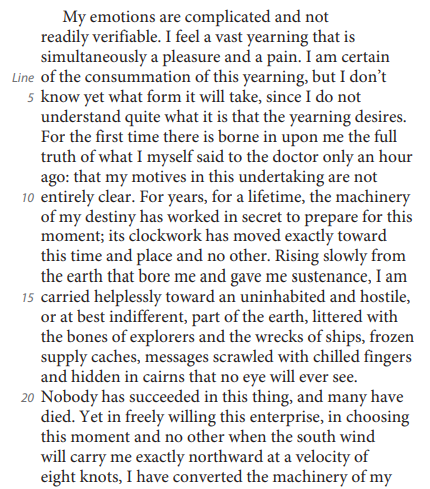
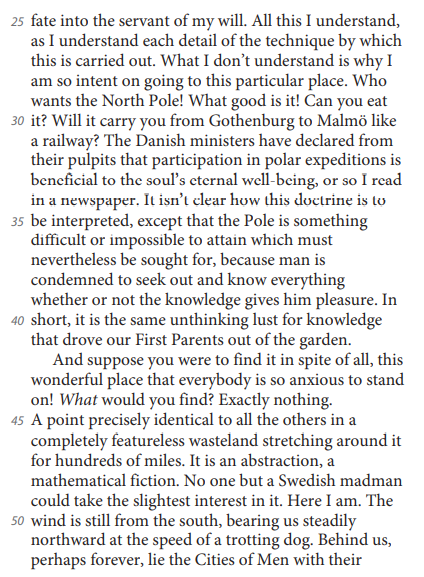
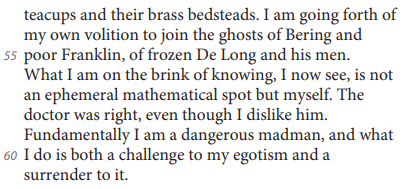
SAT Reading Comprehension Practice Test Questions
SAT Practice Test 16 Question No 1
Throughout the passage, the narrator’s attitude shifts from
Option A: fear about the expedition to excitement about it.
Option B: doubt about his abilities to confidence in them.
Option C: uncertainty of his motives to recognition of them.
Option D: disdain for the North Pole to the appreciation of it.
SAT Practice Test 16 Answer No 1
Show/Hide Answer
Option C :
The narrator initially expresses uncertainty, or uneasiness, over his decision to set out for the North Pole: “my motives in this undertaking are not entirely clear” (lines 9-10). At the end of the passage, the narrator recognizes that because of this journey he is “on the brink of knowing . . . not an ethereal mathematical spot,” the North Pole, but himself (lines 56-57).
Choices A, B, and D are incorrect because the narrator does not suggest that he fears going on the expedition, doubts his abilities, or feels disdain for the North Pole.
SAT Practice Test 16 Question No 2
Which choice provides the best evidence for the answer to the previous question?
Option A: Lines 10-12 (“For… moment”)
Option B: Lines 21-25 (“Yet… will”)
Option C: Lines 42-44 (“And… stand on”)
Option D: Lines 56-57 (“What… myself”)
SAT Practice Test 16 Answer No 2
Show/Hide Answer
Option D :
Lines 56-57 provide evidence that the narrator eventually recognizes his motives for traveling to the North Pole: “What I am on the brink of knowing, I now see, is not an ephemeral mathematical spot but myself.” The narrator initially was unsure of why he was traveling to the North Pole but realizes that he has embarked on a journey to find himself.
Choices A, B, and C are incorrect because they do not provide the best evidence that the narrator eventually recognizes his motives for traveling to the North Pole. Rather, choices A, B, and C all focus on the narrator’s preparations and expectations for the journey.
SAT Practice Test 16 Question No 3
As used in lines 1-2, “not readily verifiable” most nearly means
Option A: unable to be authenticated.
Option B: likely to be contradicted.
Option C: without empirical support.
Option D: not completely understood.
SAT Practice Test 16 Answer No 3
Show/Hide Answer
Option D :
In lines 1-6, the narrator says that he feels a “vast yearning” and that his emotions are “complicated.” He explains that he does “not understand quite what it is that the yearning desires.” In this context, his emotions are “not readily verifiable,” or not completely understood.
Choices A, B, and C are incorrect because in this context, “not readily verifiable” does not mean unable to be authenticated, likely to be contradicted, or without empirical support.
SAT Practice Test 16 Question No 4
The sentence in lines 10-13 (“For years… other”) mainly serves to
Option A: expose a side of the narrator that he prefers to keep hidden.
Option B: demonstrate that the narrator thinks methodically and scientifically.
Option C: show that the narrator feels himself to be influenced by powerful and independent forces.
Option D: emphasize the length of time during which the narrator has prepared for his expedition.
SAT Practice Test 16 Answer No 4
Show/Hide Answer
Option C :
In lines 10-13, the narrator explains that “the machinery of [his] destiny has worked in secret” to prepare him for this journey, as “its clockwork” has propelled him to “this time and place.” By using the phrases “the machinery” and “its clockwork,” the narrator is showing that powerful and independent forces are causing him to journey to the North Pole.
Choices A, B, and D are incorrect because they do not indicate the main purpose of lines 10-13. While lines 10-13 mention that these powerful and independent forces have been working “for years, for a lifetime” to convince the narrator to journey to the North Pole, they do not expose a hidden side of the narrator, demonstrate the narrator’s manner, or explain the amount of time the narrator has spent preparing for his expedition.
SAT Practice Test 16 Question No 5
The narrator indicates that many previous explorers seeking the North Pole have
Option A: perished in the attempt.
Option B: made surprising discoveries.
Option C: failed to determine its exact location.
Option D: had different motivations than his own.
SAT Practice Test 16 Answer No 5
Show/Hide Answer
Option A :
In lines 20-21, the narrator states that many people have perished while journeying to the North Pole: “Nobody has succeeded in this thing, and many have died.”
Choices B, C, and D are incorrect because the narrator does not indicate that previous explorers have made surprising discoveries, have failed to determine the exact location of the North Pole, or had different motivations than his own.
SAT Practice Test 15 Question No 6
Which choice provides the best evidence for the answer to the previous question?
Option A: affection but not genuine love
Option B: objectivity but not complete impartiality
Option C: amusement but not mocking disparagement
Option D: respect but not utter deference
SAT Practice Test 15 Answer No 6
Show/Hide Answer
Option A :
In lines 20-21, the narrator provides evidence that many previous explorers seeking the North Pole have perished in the attempt: “Nobody has succeeded in this thing, and many have died.”
Choices B, C, and D do not mention previous explorers; therefore, these lines do not provide the best evidence that explorers died while seeking the North Pole.
SAT Practice Test 16 Question No 7
Which choice best describes the narrator’s view of his expedition to the North Pole?
Option A: Immoral but inevitable
Option B: Absurd but necessary
Option C: Socially beneficial but misunderstood
Option D: Scientifically important but hazardous
SAT Practice Test 16 Answer No 7
Show/Hide Answer
Option B :
In lines 27-39, the narrator states that he is “intent” on traveling to the North Pole but acknowledges that the journey is absurd: “Who wants the North Pole! What good is it! Can you eat it? Will it carry you from Gothenburg to Malmö like a railway?” By asking these questions, the narrator recognizes that the North Pole has no practical value. Still, the narrator admits that finding the North Pole is necessary, as it “must nevertheless be sought for.”
Choices A, C, and D are incorrect because the narrator does not view his expedition to the North Pole as immoral, socially beneficial, or scientifically important.
SAT Practice Test 16 Question No 8
The question the narrator asks in lines 30-31 (“Will it… railway”) most nearly implies that
Option A: balloons will never replace other modes of transportation.
Option B: the North Pole is farther away than the cities usually reached by train.
Option C: people often travel from one city to another without considering the implications.
Option D: reaching the North Pole has no foreseeable benefit to humanity.
SAT Practice Test 16 Answer No 8
Show/Hide Answer
Option D :
In lines 27-31, the narrator asks a series of rhetorical questions about the North Pole: “Who wants the North Pole! What good is it! Can you eat it? Will it carry you from Gothenburg to Malmö like a railway?” In this context, the narrator is suggesting that reaching the North Pole has no foreseeable benefit or value to humanity; unlike trains that bring travelers to specific destinations, the North Pole does not provide humans with a specific benefit or form of convenience.
Choices A, B, and C are incorrect because the question posed in lines 30-31 does not debate modes of travel, examine the proximity of cities that can be reached by trains, or question how often people travel.
SAT Practice Test 16 Question No 9
As used in line 49, “take the slightest interest in” most nearly means
Option A: accept responsibility for.
Option B: possess little regard for.
Option C: pay no attention to.
Option D: have curiosity about.
SAT Practice Test 16 Answer No 9
Show/Hide Answer
Option D :
In lines 48-49, the narrator states that the North Pole “is an abstraction, a mathematical fiction” and that “no one but a Swedish madman could take the slightest interest in it.” In this context, the narrator is stating that people would not “take the slightest interest in,” or be curious about, the North Pole.
Choices A, B, and C are incorrect because in this context, “take the slightest interest in” does not mean to accept responsibility for, to possess little regard or, or to pay no attention to something.
SAT Practice Test 16 Question No 10
As used in line 50, “bearing” most nearly means
Option A: carrying.
Option B: affecting.
Option C: yielding.
Option D: enduring.
SAT Practice Test 16 Answer No 10
Show/Hide Answer
Option A :
In lines 49-51, the narrator describes his balloon journey toward the North Pole: “The wind is still from the south, bearing us steadily northward at the speed of a trotting dog.” In this context, the wind is “bearing,” or carrying, the narrator in a direction to the North.
Choices B, C, and D are incorrect because in this context, “bearing” does not mean affecting, yielding, or enduring.



